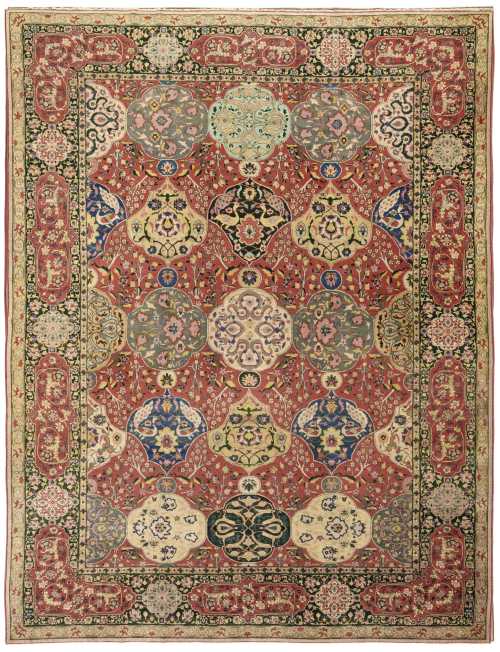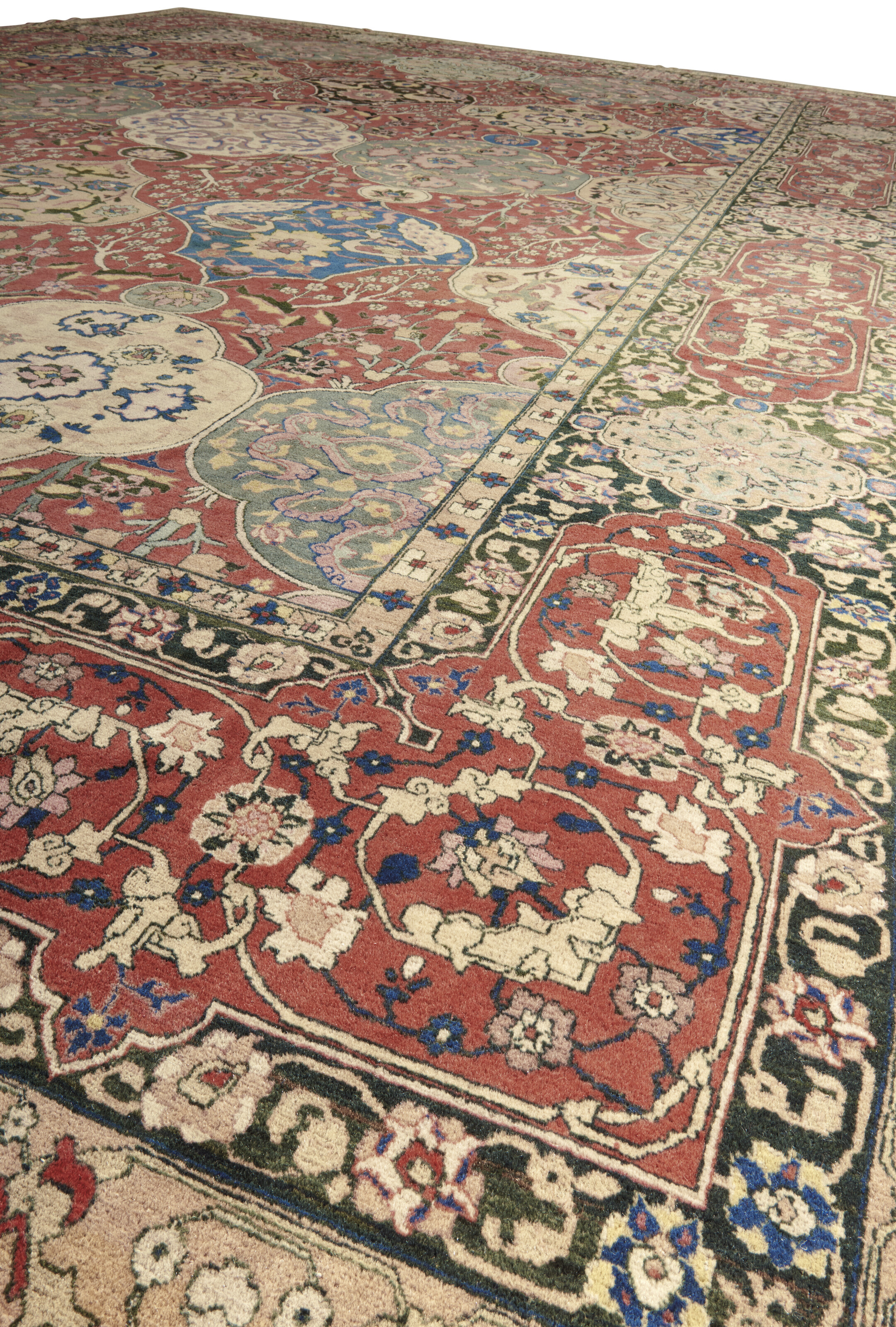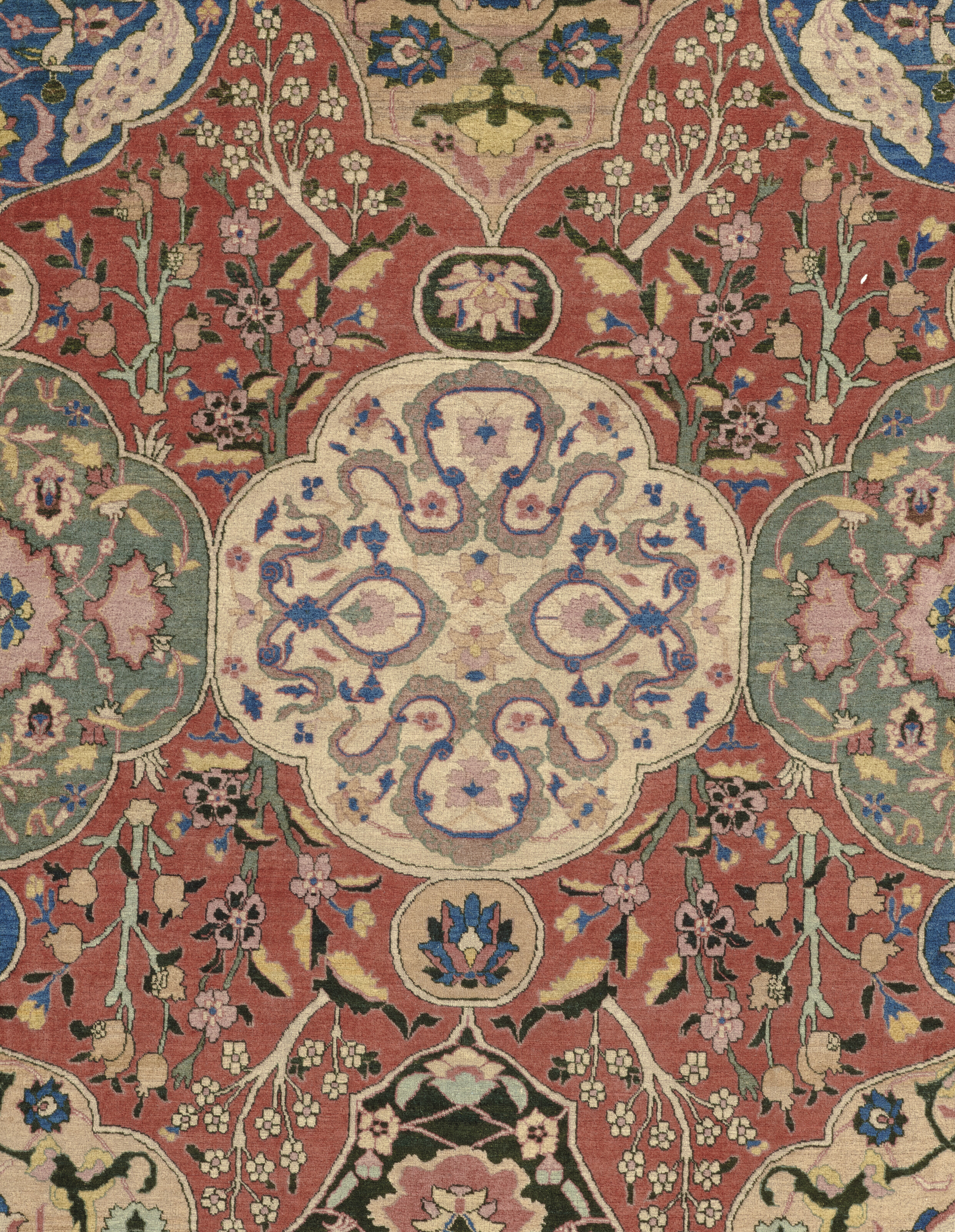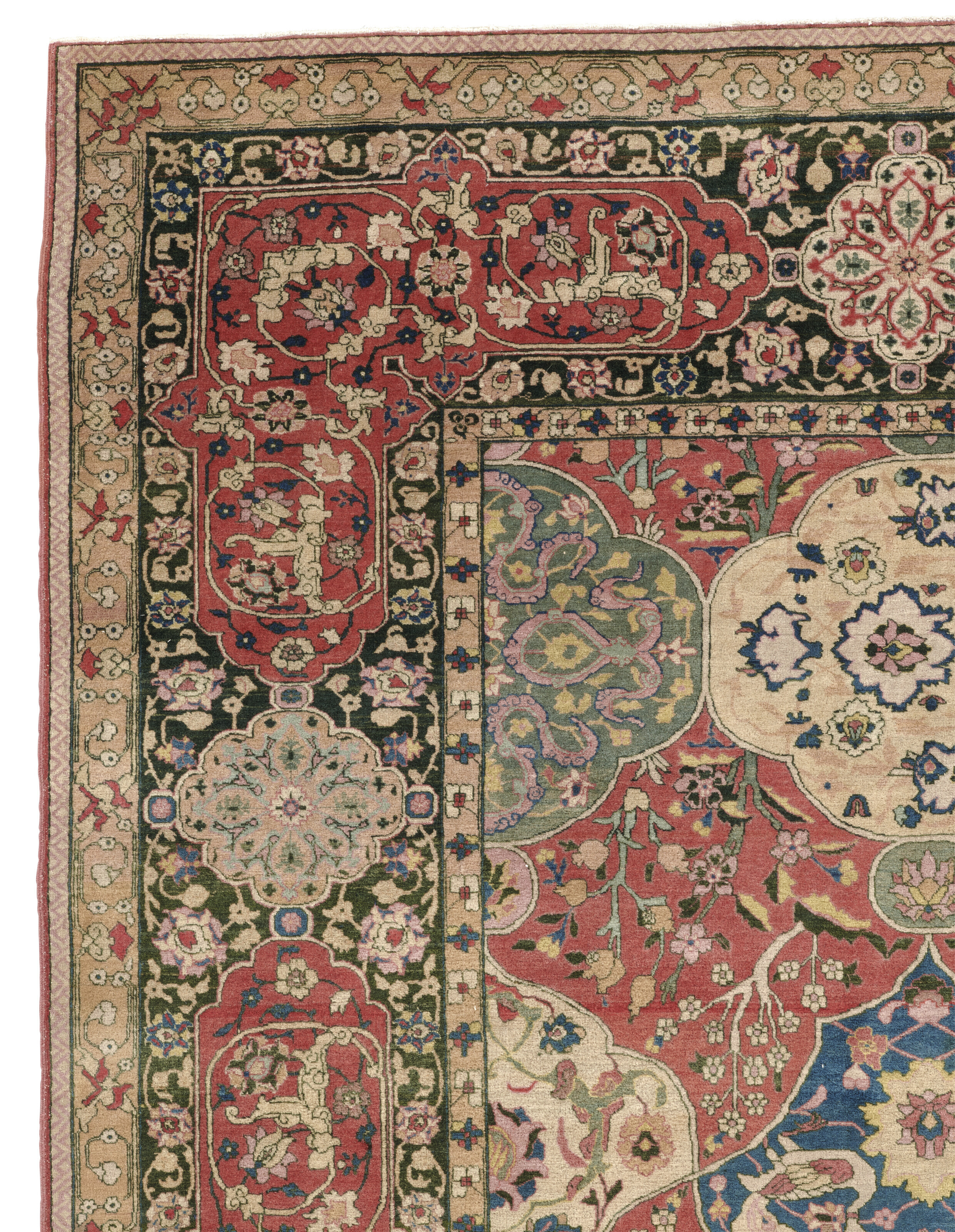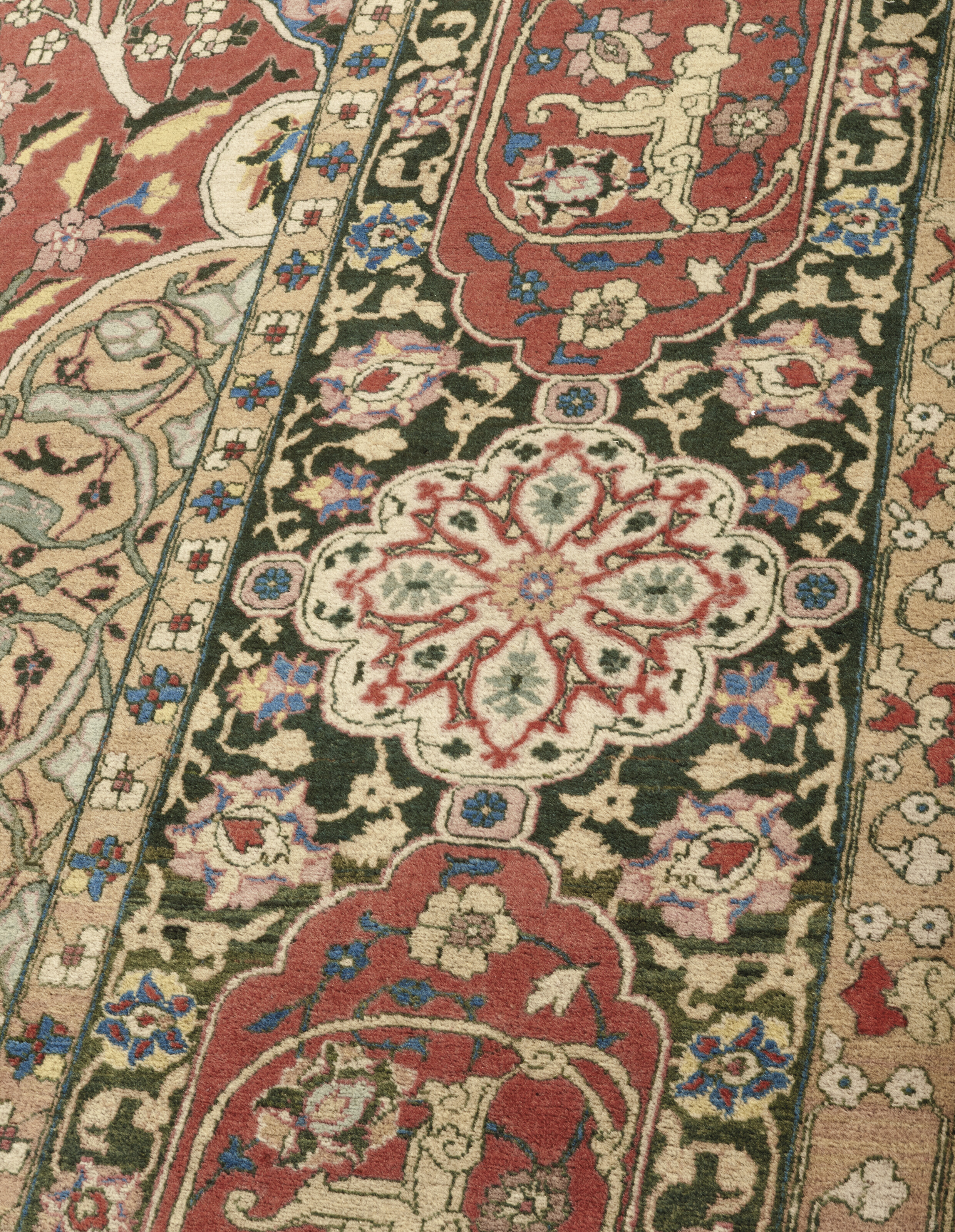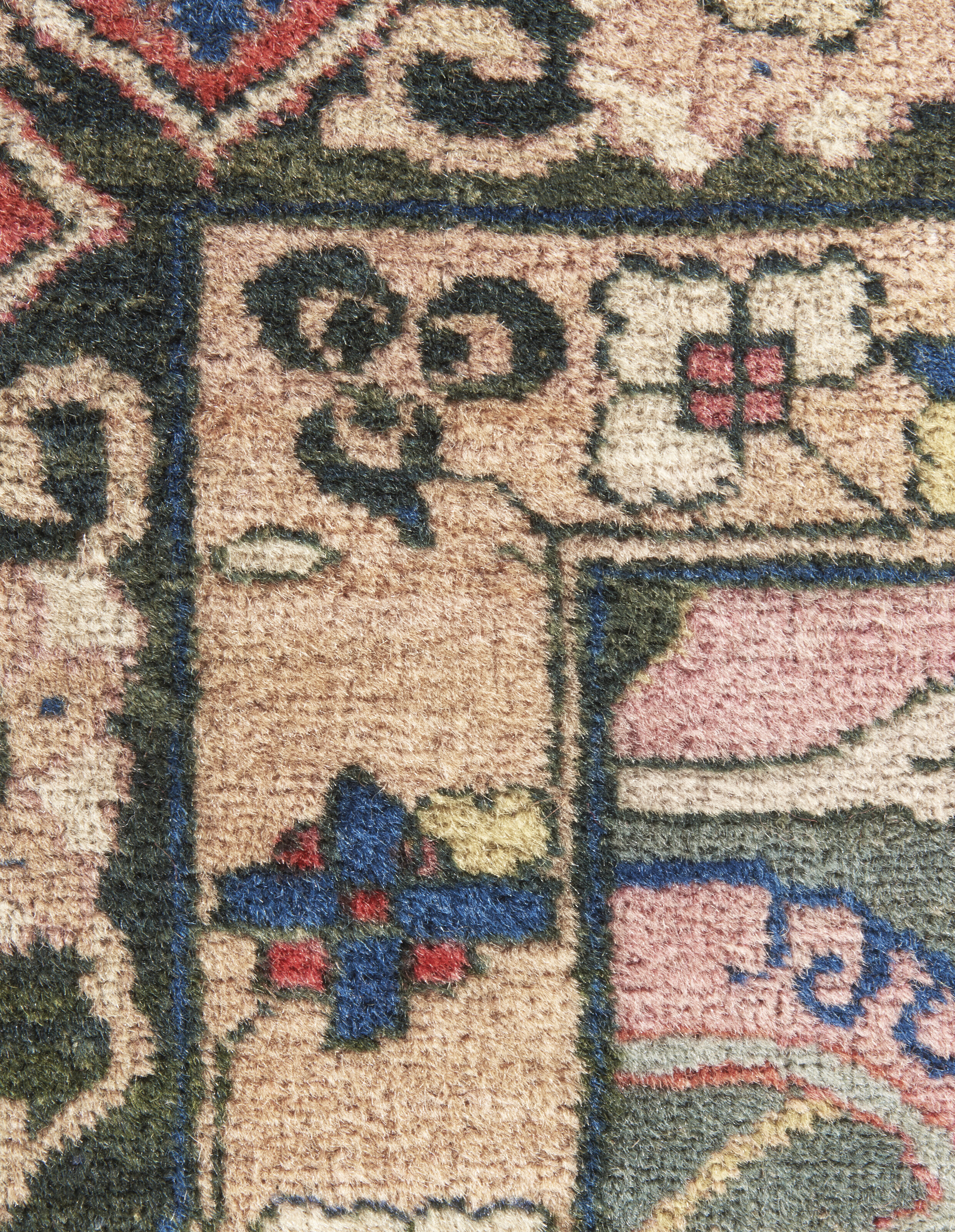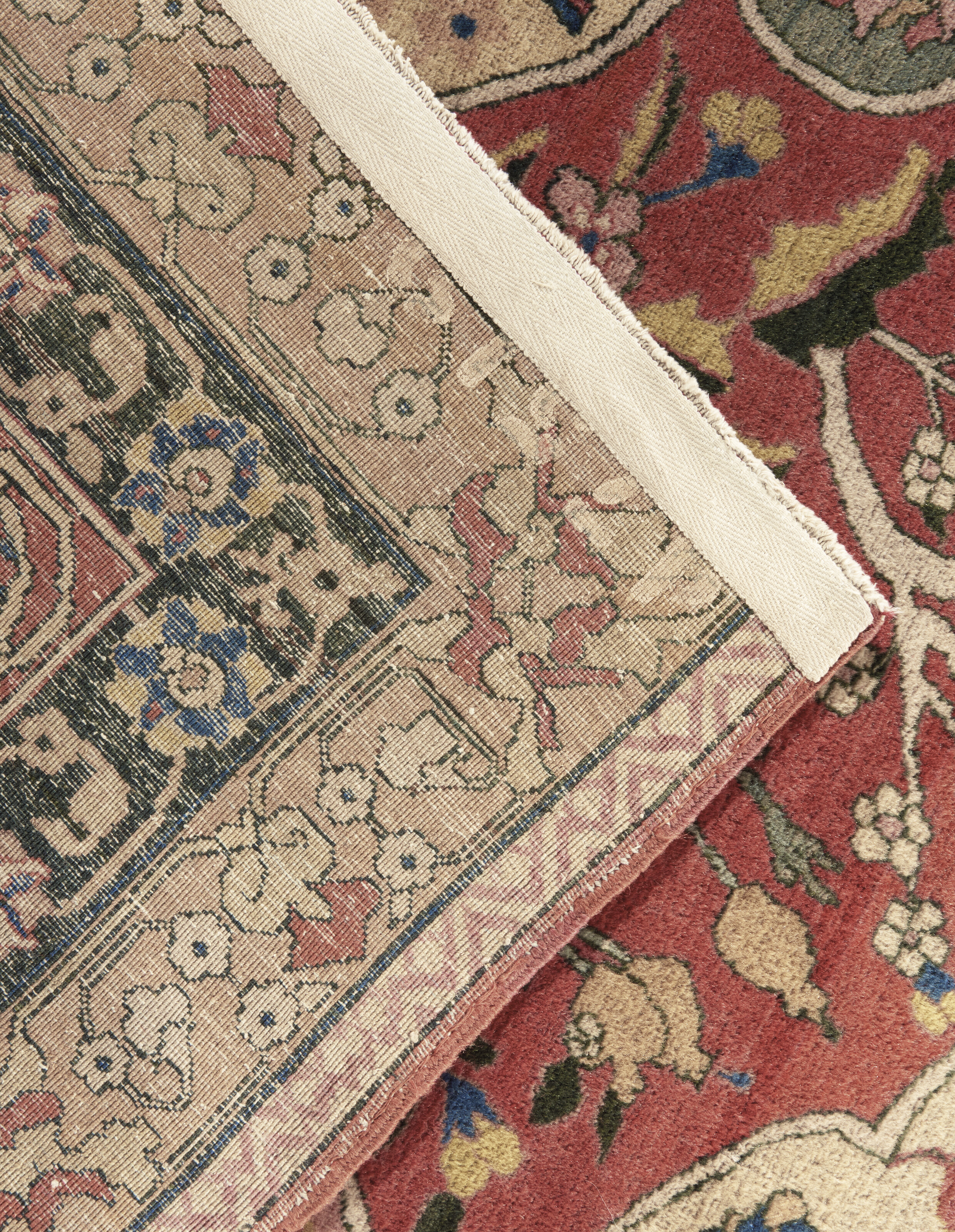- A PETAG TABRIZ CARPET 1920
- Handicrafts and classics, Carpets and rugs
- 392 * 509 cm
- NORTH WEST PERSIA, CIRCA 1920
Of 'Clam Gallus' design, the upper left ivory guard stripe bearing the çintamani signature, mostly in full pile, localised minor wear, overall good condition
Estimation
£18,000
23,690 USD
-
£22,000
28,955 USD
Realized Price
£31,420
41,353 USD
57.1%
Artwork Description
The PETAG workshop (Persische Teppiche Aktien Gesellschaft), was a German initiative founded in Berlin in 1911. Guided by the scholar/dealer Heinrich Jacoby (1889-1964), author of Eine Sammlung Orientalischer Teppiche, Berlin, 1923, amongst other works, a large workshop was opened in the city of Tabriz, north west Persia. Its aim was to produce carpets of the highest quality in order to combat the decline in quality encountered due to the mass production of carpets in the late 19th century. PETAG carpets are identified by their use of particularly lustrous kurk wool, natural vegetal dyes and their distinctive 'signature' formed of three çintamani roundels arranged in a triangular formation, often located in the far corner of the field or border pattern. Originally a Tibetan Buddhist motif, it symbolised a wish-fulfilling glowing pearl, as well as the triple spots of a leopard's pelt. The çintamani was later adopted by the Ottomans and used in textiles and ceramics, amongst other art forms. Heinrich Jacoby personally owned one such Iznik tile sold in these Rooms, 25 October 2018, lot 217. This is thought to be the source behind the company's design logo, featured on the cover of Die Petag Im Dienste Ihrer Kunden, Frankfurt, 1961.
At the end of the 19th century/beginning of the 20th century, there were a number of highly important publications on the history of Oriental carpets which included large-scale black and white, and more importantly, some colour illustrations, of magnificent Safavid and Ottoman carpets. Publications such as, A History of Oriental Carpets before 1800, by F.R. Martin, Stockholm, 1908 ; Friedrich Sarre's, Orientalische Teppiche, Vienna, 1892, and, Alt-Orientalische Teppiche, by F. Sarre and Herrman Trenkwald, Vienna, 1926 (see lot 151 in the present sale), gave the workshop access, for the first time, to the great 16th and 17th century carpet designs. These were faithfully reproduced with minor alterations to the colour palette to suit Western tastes.
The design of the present rug is copied from the famous Clam Gallus carpet in the Österreichisches Museum für angewandte Kunst in Vienna, (Inv. no. T 9026⁄1941), a 16th century Safavid carpet woven in Khorassan in north east Persia. The Clam Gallus carpet was published in all the important carpet publications of the late 19th and early 20th centuries mentioned earlier. Interestingly, in each of these publications only a quarter of the carpet was illustrated and it is this truncation in the coloured plates that explains the proportions of the present rug.
At the end of the 19th century/beginning of the 20th century, there were a number of highly important publications on the history of Oriental carpets which included large-scale black and white, and more importantly, some colour illustrations, of magnificent Safavid and Ottoman carpets. Publications such as, A History of Oriental Carpets before 1800, by F.R. Martin, Stockholm, 1908 ; Friedrich Sarre's, Orientalische Teppiche, Vienna, 1892, and, Alt-Orientalische Teppiche, by F. Sarre and Herrman Trenkwald, Vienna, 1926 (see lot 151 in the present sale), gave the workshop access, for the first time, to the great 16th and 17th century carpet designs. These were faithfully reproduced with minor alterations to the colour palette to suit Western tastes.
The design of the present rug is copied from the famous Clam Gallus carpet in the Österreichisches Museum für angewandte Kunst in Vienna, (Inv. no. T 9026⁄1941), a 16th century Safavid carpet woven in Khorassan in north east Persia. The Clam Gallus carpet was published in all the important carpet publications of the late 19th and early 20th centuries mentioned earlier. Interestingly, in each of these publications only a quarter of the carpet was illustrated and it is this truncation in the coloured plates that explains the proportions of the present rug.
More lots by Unknown Artist
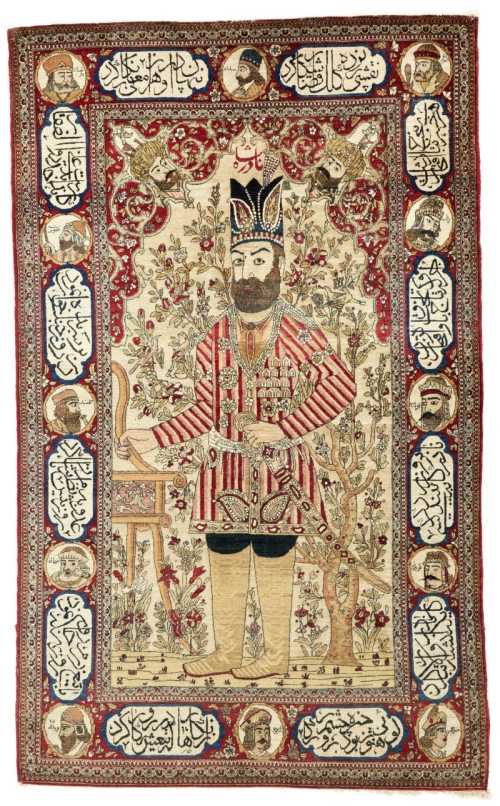
An Isfahan pictorial rug, Central Persia, circa 1910
Estimation
£4,000
5,236 USD
-
£6,000
7,853 USD
Realized Price
£5,670
7,421 USD
13.4%
Sale Date
Sotheby's
-
30 March 2022

A gold medal commemorating the coronation of Muhammad Reza Shah and Queen Farah
Estimation
£100
132 USD
-
£200
263 USD
Realized Price
£160
211 USD
6.667%
Sell at
Sale Date
Rosebery's Auction
-
1 April 2022
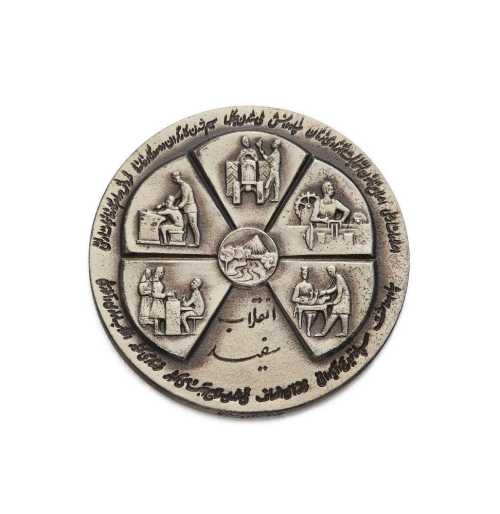
A silver memorial medal of the White Revolution, Muhammad Reza Shah, 1967
Estimation
£200
263 USD
-
£300
395 USD
Realized Price
£170
224 USD
32%
Sell at
Sale Date
Rosebery's Auction
-
1 April 2022
Realized Price
67,245 USD
Min Estimate
35,481 USD
Max Estimate
53,247 USD
Average Artwork Worth
+83.63%
Average Growth of Artwork Worth
Sales Performance Against Estimates
Average & Median Sold Lot Value
2021 - 2025
Performance vs. Estimate
2021 - 2025
Sell-through Rate
2021 - 2025
Similar Artworks
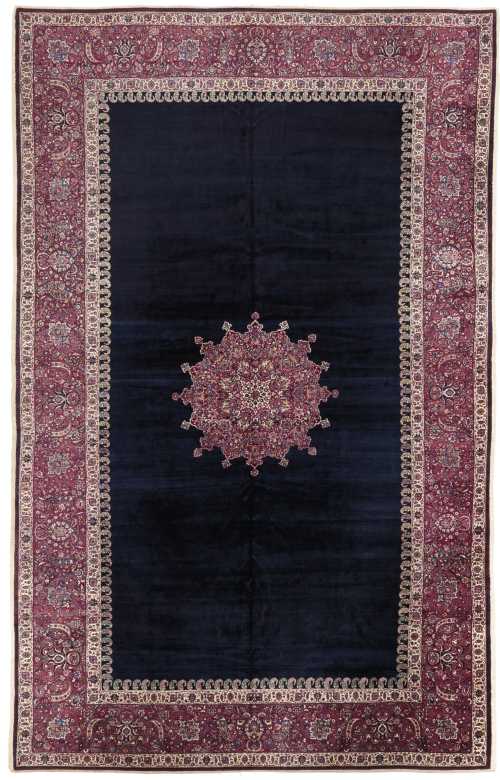
A MESHED CARPET
Estimation
£14,000
18,426 USD
-
£18,000
23,690 USD
Realized Price
£22,680
29,850 USD
41.75%
Sell at
Sale Date
Christie's
-
31 March 2022
